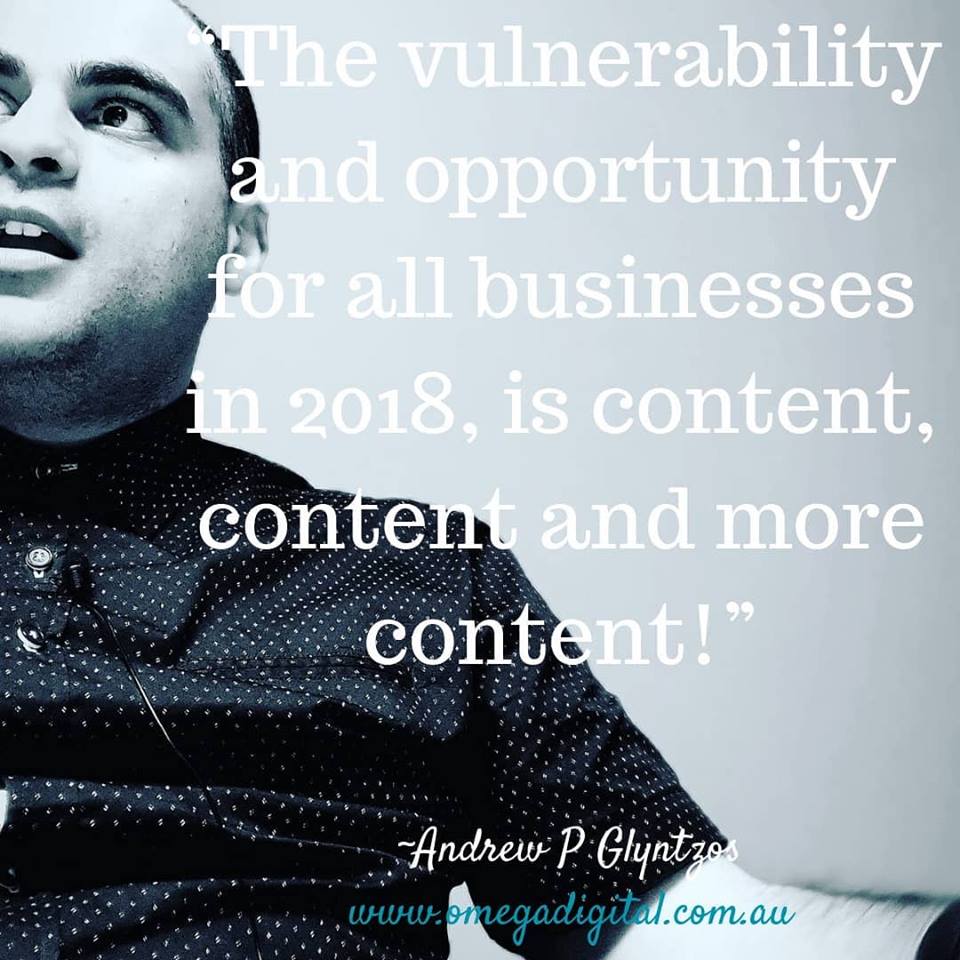Three great strategies to start implementing in your online marketing efforts are:
- Content
- Keywords
- Videos
These strategies will deliver you increased ROI and more traffic when combined together.
Don’t just produce content that you think is great, and don’t just target keywords that you think are going to work for your business, make sure you consider the ROI. If you want your business to benefit from SEO, you need to consider these three things.
How Content Helps SEO?
Start asking the question, ‘Are these keywords going to build our business going forward? ‘
The more relevant content you create the better for SEO. Creating great content means producing content that aligns with the searchers intent. The best content is created from what we call ‘documenting for content’, where you document what you do and use that as the basis to create content.
One example using a mobile phone repair business would be to record a video of ‘how to repair a cracked mobile phone screen’. You could record a time lapse video, and even create a blog or article based on the video. There’s a good chance that it’s going to rank, and when it does rank for any number of keyword variations, it’s going to land a visitor on a page that isn’t just there to sell to them – but one that will help establish trust and credibility. This type of ‘how-to’ content is the best way help align your content with the searchers intent.
Creating content is the price of success for both SEO and social media, and it’s also an ongoing process. Google is known to reward ‘fresh content’, and content that has higher click through rates. This is not a short-term strategy, you need to keep producing engaging content if you want to benefit from SEO.
Helpful content is always a winner because when Google Home starts unleashing in a more aggressive manner, this helpful how-to content is going to dominate the voice search world. It’s going to maximise your position and launch your business ahead of your competitors for Google Home and voice search. Amazon’s a little bit different, but with Google Home it’s going to help you rank, so you have to start thinking about that content today.
Finding ROI Positive Keywords
Many marketers simply choose a list of keywords they think generate the most search traffic for their particular product or service, but you need to get the right balance between relevancy and search traffic. This needs to be communicated to stakeholders who may focus solely on keywords that are going to bring large amounts of traffic, but that may sacrifice the number of conversions. SEO isn’t about sending large volumes of unqualified traffic to your website, we have a saying here at Omega Digital:
‘What’s smart for SEO is smart for business’.
Note: An ideal visitor to your website is one who will take your desired action.
What are the best keywords for SEO?
The best keywords for SEO are ROI positive keywords, but that doesn’t necessarily mean the most popular keywords. In our experience, some of the highest ranking keywords are on average three or four words long. Some examples include ‘buy small LCD TVs’ or ‘buy big LCD TVs’, or ‘buy 50-inch LCD TVs’. These sort of keywords balance high search volume with high levels of relevancy. These corner keywords fall right in the middle, and the balance often makes them the best keyword choice for ROI.
You could choose to focus on a keyword like ‘LCD’ – and that keyword will probably deliver more traffic than ‘buy large LCD TVs’ for example, but the person that’s actually going to make a purchase is more likely to click ‘buy large LCD TVs’ than just ‘LCD’. We recommend that clients stay away from targeting single word keywords, not necessarily because they are bad keywords, but because they are not going to be ROI positive. You may rank in the future when you become more and more authoritative and trustworthy, so the goal should be focusing on these two primarily. Esp for new and small biz.
Keywords and conversion rates
Ranking first or second for a one-word keyword may deliver large amounts of traffic, but that traffic isn’t necessarily going to convert because we don’t know what the searchers intent was. Were they trying to research more about LCD TVs? Are they even in the market to purchase a TV? There are a variety of different contexts as to the searchers mindset, and that’s why search intent and delivering relevant content that matches the user’s intent is vital to lowering bounce rate, increasing time on site, and increasing page-views per session. It makes sense for the business and for it’s customers. Not all high search volume traffic keywords are right for your business, because of the time and effort it takes to rank for a keyword like ‘LCD’ it may not be ROI positive.
Ideas for SEO friendly Videos
Creating helpful how-to videos is easier than you think using Google Suggest. Simply type a keyword into Google and scroll right down to the bottom and you’ll see a whole list of recommendations. You can also review the search suggestions for even more ideas. Keyword ideas for YouTube can also be found if you use the search filters and see what drops down as some of the most frequently asked questions/queries may be. You can see what information people are looking for that’s relevant to your particular product or service.
Video content increases time on site and boosts your business’s credibility at the same time. When videos are relevant to the searchers intent, they build your business, increase your market share and help you become an industry thought leader.
Is video still important for SEO?
It’s been proven time and time again that visitors are more inclined to watch videos. Engagement rates suggest that demand for video content will continue to grow, and more than 80% of internet traffic is predicted to be video based by 2021 (Cisco VNI Complete Forecast, https://newsroom.cisco.com/press-release-content?type=webcontent&articleId=1853168 ). In case you’re more interested in how video content is consumed today, Facebook already generates 8 billion video views on average, per day (Facebook, http://investor.fb.com/releasedetail.cfm?ReleaseID=940609 ).
Social video generates 1200% more shares than both text and images combined and Facebook video posts achieve 135% greater organic reach than photo posts ( according to Socialbakers, https://www.socialbakers.com/blog/2367-native-facebook-videos-get-more-reach-than-any-other-type-of-post) .
We would love to hear from you.





